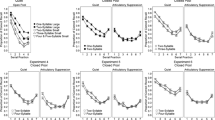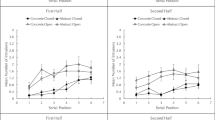Abstract
Immediate and 15-min delayed recall of semantically related or unrelated word lists was investigated in 144 normally developing children ranging from 5 to 10 years of age. Immediate recall for the related and unrelated lists increased in a parallel fashion as a function of age. The ability to cluster semantically related items during immediate recall also improved with age. However, in no age class recall scores and clustering indexes were significantly associated. Forgetting rate passing from the last immediate to the delayed recall trial increased for the unrelated list but decreased for the related list of words as a function of age. Results of regression analyses revealed that a developmental increase in forgetting on the unrelated list was actually due to the higher number of words recalled in the last immediate trial by older children. As for the related list, instead, the larger reliance on the clustering strategy of recall by older children was responsible for the progressive reduction of forgetting.
Similar content being viewed by others
Author information
Authors and Affiliations
Additional information
Received: 2 July 1998 / Accepted in revised form: 22 February 1999
Rights and permissions
About this article
Cite this article
Vicari, S., Pasqualetti, P., Marotta, L. et al. Word-list learning in normally developing children: effects of semantic organization and retention interval. Ital J Neurol Sci 20, 119–128 (1999). https://doi.org/10.1007/s100720050019
Issue Date:
DOI: https://doi.org/10.1007/s100720050019




